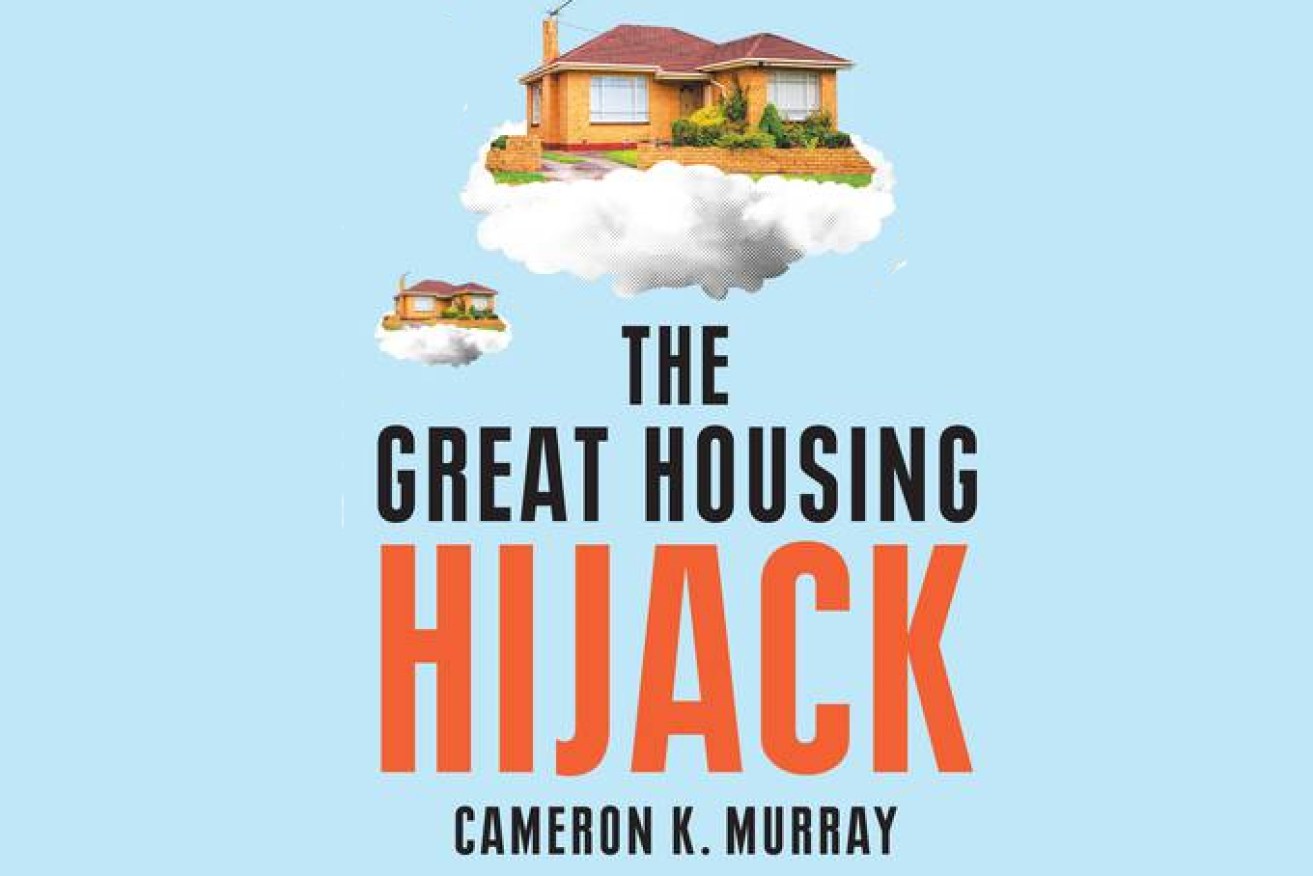The Great Housing Hijack and our age-old problem


The hoaxes and myths keeping prices high for renters and buyers in Australia. Photo: Allen & Unwin
How is it that at the richest point in human history we no longer achieve improvements in desirable housing outcomes, and are instead going backwards on many metrics?
This is a question The Great Housing Hijack answers.
But, to begin to answer it, we need much more context, something all too rare when it comes to analysis of housing markets.
In this case, we need to look further back in time.
Unequal access to housing and declining home ownership might seem like a uniquely modern problem. Sometimes people today will attribute this outcome to too much greed or to housing being treated as an asset class instead of a necessity. Whatever it is, the problem is seen as new and therefore recent actions are to blame.
But the problem is age-old.
A problem for the ages
In his visit to Sydney in 1836 on HMS Beagle, biologist and father of evolutionary theory Charles Darwin immediately adopted the national pastime of commenting on the housing market.
In his diary entry on his first day in Sydney, he wrote:
the number of large houses just finished & others building is truly surprising; nevertheless every one complains of the high rents & difficulty in procuring a house . . . Sydney has a population of twenty-three thousand, & is as I have said rapidly increasing; it must contain much wealth; it appears a man of business can hardly fail to make a large fortune; I saw on all sides fine houses, one built by the profits from steam- vessels, another from building, & so on. An auctioneer who was a convict, it is said intends to return home & will take with him 100,000 pounds.
Another who is always driving about in his carriage, has an income so large that scarcely anybody ventures to guess at it, the least being assigned being fifteen thousand a year. But the two crowning facts are, first that the public revenue has increased 60,000 £ during this last year, & secondly that less than an acre of land within the town of Sydney sold for 8000 pounds sterling.
Later in the nineteenth century, Friedrich Engels, who became a historical figure for his writing on class struggles and his work with Karl Marx on capitalism, wrote a series of articles in 1872 seeking an answer to ‘The Housing Question’ that puzzled those in the industrial cities of central Europe. He asserted:
The so-called housing shortage, which plays such a great role in the press nowadays, does not consist in the fact that the working class generally lives in bad, overcrowded and unhealthy dwellings. This shortage is not something peculiar to the present; it is not even one of the sufferings peculiar to the modern proletariat in contradistinction to all earlier oppressed classes. On the contrary, all oppressed classes in all periods suffered more or less uniformly from it. In order to make an end of this housing shortage there is only one means: to abolish altogether the exploitation and oppression of the working class by the ruling class. What is meant today by housing shortage is the peculiar intensification of the bad housing conditions of the workers as the result of the sudden rush of population to the big towns; a colossal increase in rents, a still further aggravation of overcrowding in the individual houses, and, for some, the impossibility of finding a place to live in at all. And this housing shortage gets talked of so much only because it does not limit itself to the working class but has affected the petty bourgeoisie also.
Fast forward to the early 20th century. In 1910, the New South Wales government commissioned University of Sydney academic Robert F. Irvine to investigate the problem of rising housing rents and learn from the policies other countries had adopted to remedy the problem.
The report he produced in 1913 sought to answer these two questions.
- How, in the congested areas of large cities and in certain industrial centres, to get rid of the results of unregulated housing—over-housing, overcrowding, high rentals for inferior accommodation, and all the evils that flow from them.
- How society may best provide that each individ- ual family unit, whether living in the city or country, may have a home that shall be self-contained, private, sanitary, open in every room to sunlight and fresh air, safe from fire and collapse, and yet at a rent consistent with income—a home that shall be artistic and hygienic, a home environment which shall be if not actually constructive, at least not destructive, of either body or character, and at a rent no higher than is paid for the slum tenements of to-day.
Little changed after his report. In 1919, the Inter-State Commission conducted the Piddington Inquiry into housing rents and in 1939 the New South Wales government conducted yet another Rents Inquiry. When they met to discuss post–World War II housing policy in 1947, key Australian public officials noted the appalling housing conditions of the early 20th century that prompted these inquiries.
Cheap, mean houses were built all round and between the factories. With no legislative restrictions to set even modest standards of space and light, or even the humanitarian consid- erations of health and privacy, row upon row of workers’ dwellings were jammed into every street.
Land values rose with the high industrial potential, this was reflected in the rates and added rents until this spiral of values reached a stage when one family could not afford one terrace home. These were then subdivided to cram in more people, and so began the overcrowding that exists until this day.
The age-old housing problem stretches back in time too. Archaeological records of property sales translated from ancient Mesopotamian stone tablets show similar price patterns to modern cities.
There is not much new under the sun.
We only perceive the housing metrics in recent decades as being in a decline if we compare them with the rising metrics of the ‘golden age’ of economic expansion—the end of World War II until the mid-1970s. That age not only saw a great demographic change due to the baby boom, but it ended with a peak in many social indicators. That age, for example, saw the highest rate of public housing construction in Australia and the United Kingdom.
In 1955, for example, Prime Minister Robert Menzies was motivated to tackle the ‘vital problem of home ownership’ and boasted that his Liberal government had built more public housing than the previous Labor Party and would continue to do so. Because of heavy government interventions, rents in Australia fell 50 per cent in inflation-adjusted terms during the war and didn’t return to their pre-war levels until the 1980s.
In the early 1970s the amount of income spent on private housing rents was at its lowest point and home ownership in Australia was at its highest peak. There were similar increases in home ownership in the United States and United Kingdom, and this gave millions of households a lifetime of housing security by escaping the rental market.
Considered over a longer time frame, the housing market of the last four decades looks like a return to the normal operation of private property markets after an abnormal break in the mid-20th century. The rollicking free markets of the 19th century and the interwar period of the 20th century saw extremely low home ownership, high rents, low-quality dwellings and violent boom-and-bust price cycles.
In Australia, the rate of home ownership was under 40 per cent at the beginning of the 20th century in metropolitan areas (though higher in rural areas), far from the peak of 71 per cent in the early 1970s, and far below its current 66 per cent rate.
Those pre–golden age periods also saw rapid economic growth driven by new technologies, like electrification, but this growth and innovation never quite resulted in everybody having access to clean, comfortable and modern housing.
Back in 1879 one of the most influential books of the era in the English-speaking world was written by Philadelphia-born journalist Henry George. ‘The association of poverty with progress is the great enigma of our times’ he wrote in that book, Progress and Poverty.
He concluded that the enigma was due to the ability of landlords and property owners to constantly extract from non-property-owning workers their rising wages, meaning that the ‘prodigious increase in wealth-producing power’ of the 19th century was a process that was economically linked to the impoverishment of the landless worker. Every gain made by wage earners resulted in further gains to landlords via higher rents.
George’s observation—that private property markets by their nature tend towards concentration of ownership and rents that grow in line with workers’ wages—is still relevant today. We see it in the steady declines in home ownership rates in many developed nations globally, the increasingly stark clustering of households by income and wealth at certain locations, and housing rents rising lockstep with incomes.
These patterns are not a radical and unique modern problem; they were the status quo in the free market economies of the 19th and early 20th centuries when home ownership was an option only for the wealthy minority.
Historically, housing markets were always divided between the haves and have-nots. What we are seeing since the 1980s is a return to the normal operation of housing markets after the post-World War II decades of heavy government intervention.
Few acknowledge this; instead, they parrot slogans like ‘let the market work’. This reflects historical illiteracy.
Dr Cameron Murray is a leading commentator on housing. He is an economist and runs his own think tank – Fresh Economic Thinking.
This is an extract of Murray’s latest book The Great Housing Hijack, which was published by Allen & Unwin this week.








